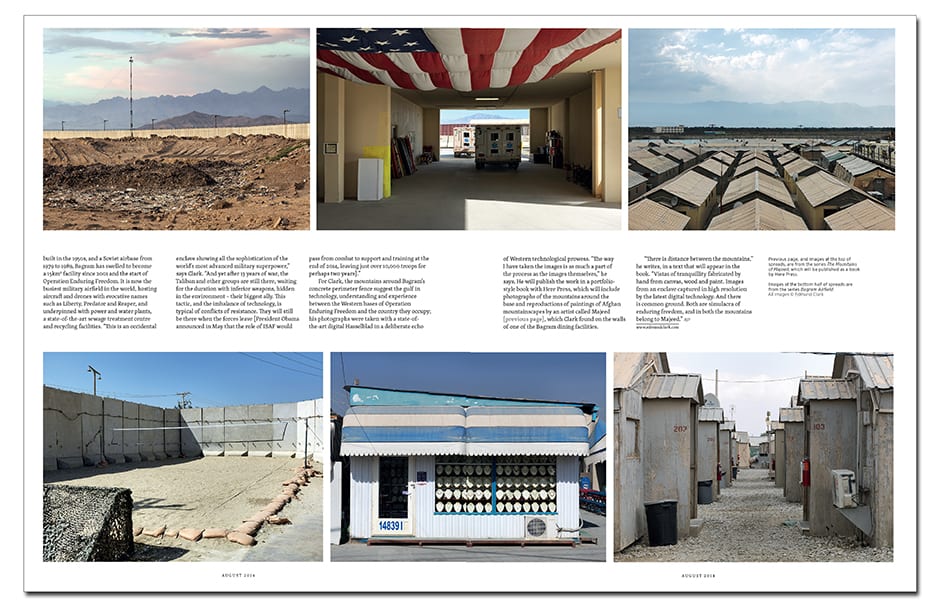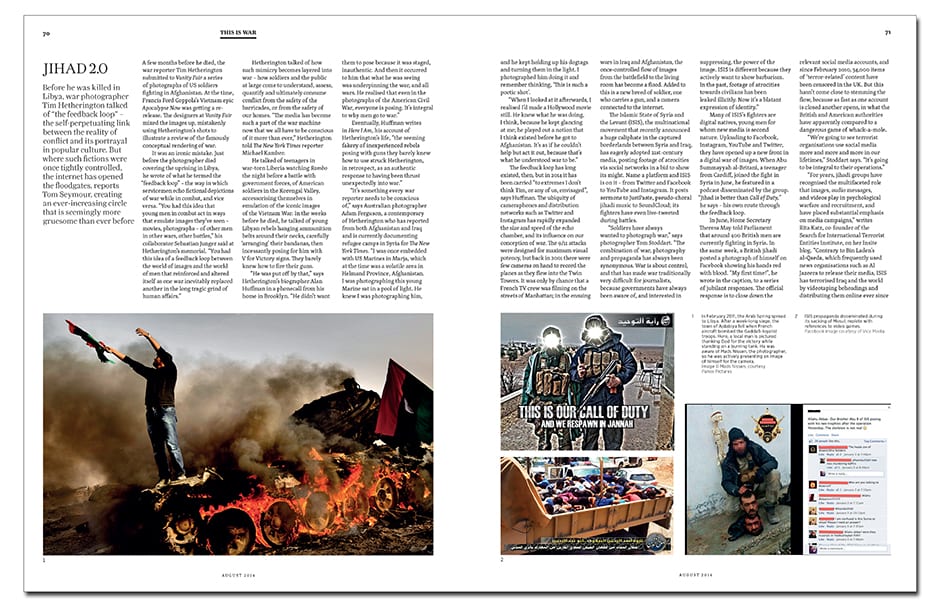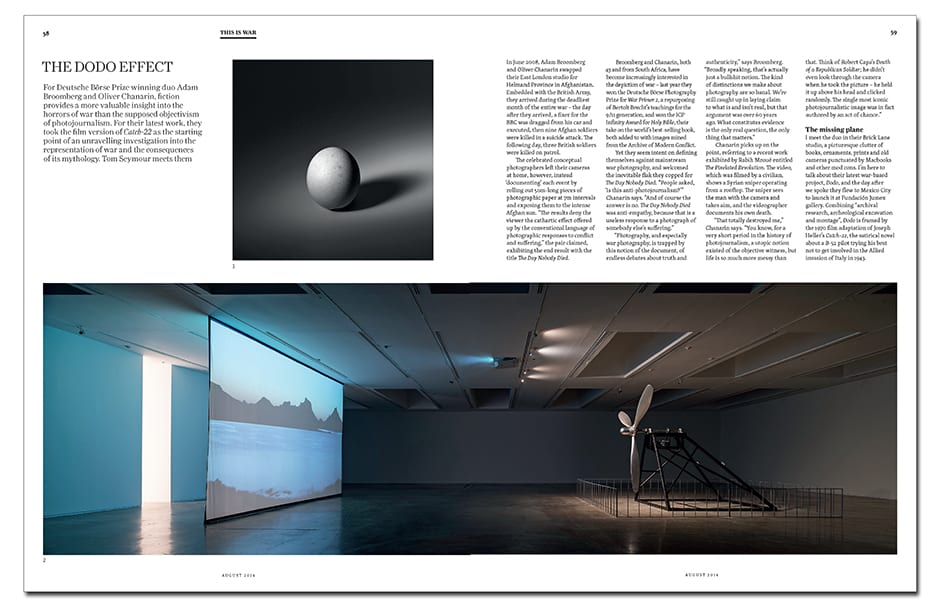This year is the centenary of the start of World War I – the war to end all wars that unfortunately didn’t. Like many others, we’ve decided to mark the occasion with a special issue of BJP devoted to images of war.
In our August issue (#7827), This is War, we’ve focused on contemporary conflict rather than the Great War, and deliberately avoided the kind of images familiar from the news.
Instead we look at the everyday experience of war – as it’s experienced by soldiers fighting it, civilians caught up in it, or those watching from the relative security of the sidelines. In this way we hope to investigate how war becomes an everyday fact of life, normalised to the extent that we accept it.
We begin our investigation with Melanie Friend’s photographs of British air shows, which take on a sinister tone, and continue with three portfolios that portray everyday life in the extraordinary circumstances of war: Edmund Clark’s images of Bagram Airfield, the US military’s largest enclave in Afghanistan; Emine Gozde Sevim’s series, Embed in Egypt, a personal exploration of the complexity of Eastern and Western identities; and Kirill Golovchenko’s alternative take on the conflict in Ukraine as evidenced in his images of the barricades that shielded demonstrators, which he photographs as works of art.
Above: Edmund Clark talks to deputy editor Diane Smyth about his images of Bagram Airfield in Afghanistan
Six essays follow, tackling aspects of the representation of war.
Before he was killed in Libya, war photographer Tim Hetherington talked of “the feedback loop” – the self-perpetuating link between the reality of conflict and its portrayal in popular culture. But where such fictions were once tightly controlled, the internet has opened the floodgates, as Tom Seymour reports.
Above: Senior writer Tom Seymour looks at “the feedback loop”, a phenomenon in which conflict and its portrayal in the media play out in a perpetual circle
Elsewhere, Paul Wombell argues that smart bombs, drone technology and the amalgamation of cameras and weaponry have brought the lens closer to death, but at the same time they’ve made the experience of war more distant.
Julian Stallabrass discusses Lisa Barnard’s forthcoming book, which looks at the bureaucracy and remote technology that allows the War on Terror to take place, and critic Gerry Badger discusses Giorgio Di Noto’s re-appropriated images from the Arab Spring, which, he argues, ask fundamental questions about photographic journalism and the role of the internet in disseminating news.
We also interview Adam Broomberg and Oliver Chanarin about their latest work, which takes the film version of Catch-22 as its starting point [below].
Finally – in an exception to our theme – we look at Christoph Bangert’s shocking and gruesome images of war. Shot while he was working in conflict zones over the past decade, the images in War Porn have never been published – until now – either because he self-censored or editors found them too gruesome.
We also present the second part of our Class of 2014 Projects, featuring our pick of new BA photography graduates across the UK and Ireland.
This issue is available from the BJP shop or available to download now.
Check here for our latest discount subscription offers.




